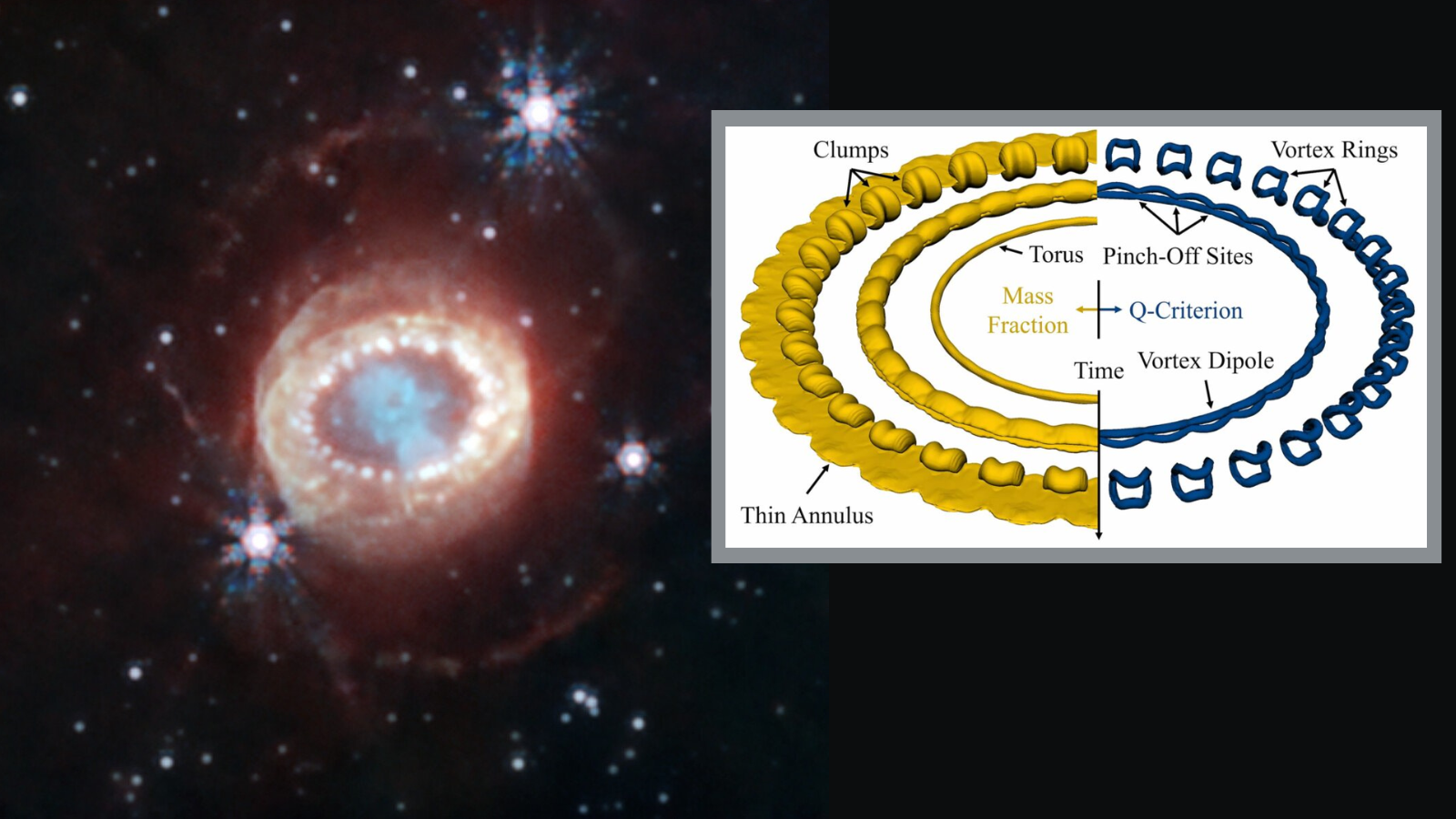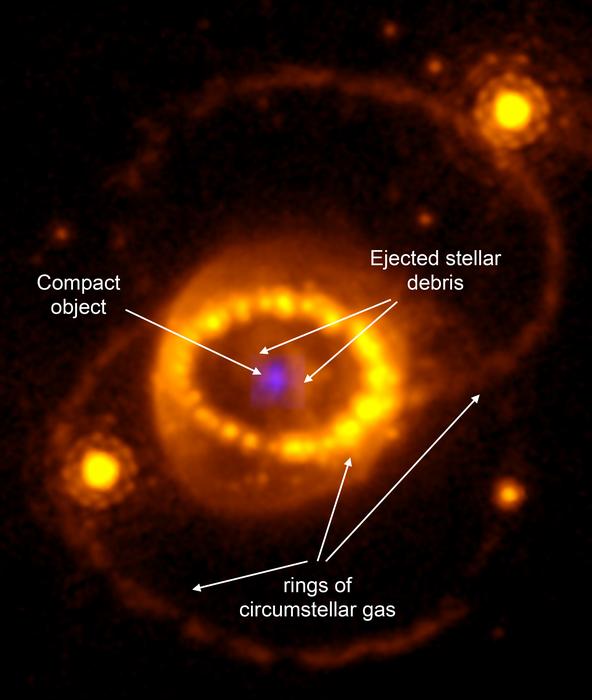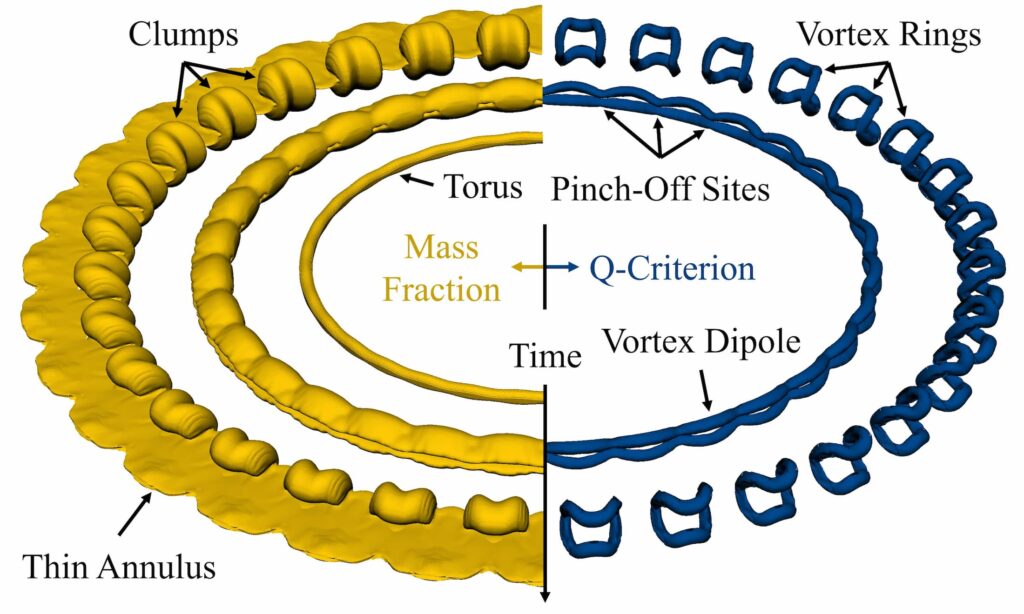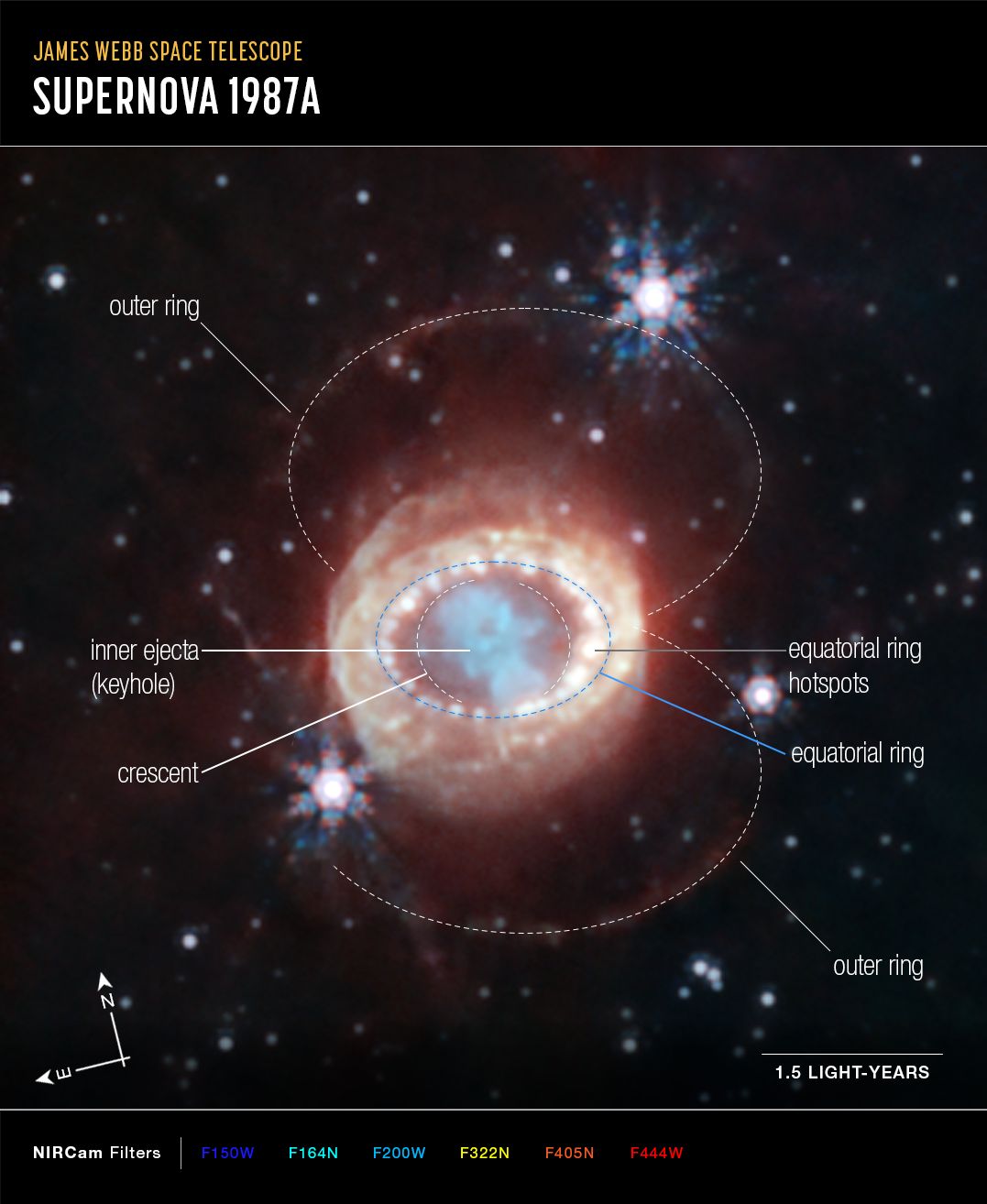Scientists may finally know why this infamous supernova wears a 'string of pearls'
"The fascinating part about this is that the same mechanism that breaks up airplane wakes could be in play here."

Scientists may have discovered how a supernova that sits relatively close to Earth came to be adorned by a remarkable "string of pearls" formation.
Supernova 1987A (SN 1987A) represents the remains of a huge cosmic explosion that ripped apart a massive star and left behind a neutron star ringed by stellar material. It's located in a satellite galaxy of the Milky Way called the Large Magellanic Cloud, or LMC. This region sits around 160,000 light-years away from us.
What is particularly remarkable about SN 1987A is the fact that it is ringed by clumps of glowing hydrogen plasma — a structure that has turned into a longstanding mystery in astrophysics. A phenomenon called Rayleigh-Taylor instability is often used to explain the formation of fluid structures in plasma such as what we see around SN 1987A, but this concept alone can't fully explain the supernova remnant's cosmic jewelry.
Now, however, researchers from the University of Michigan may understand at last how this "string of pearls" was forged. They believe the structure may be connected to the way contrails are created. Those are the fluffy white streaks that airplanes leave behind in the sky as they fly over the surface of Earth.
Related: James Webb Space Telescope spots neutron star hiding in supernova wreckage
"The same mechanism that breaks up airplane wakes could be in play here," Michael Wadas, team member and a researcher at the California Institute of Technology, said in a statement.
With this airplane parallel, the team suggests that the formation of SN1987A's hydrogen clumps could be the result of a mechanism called "Crow instability." Closer to home, this phenomenon occurs when airflow from each wing of a jet, known as wingtip vortices, spiral into one another. This creates gaps in what would otherwise be smooth cloud lines, visible because of water vapor in the jet's exhaust.
Breaking space news, the latest updates on rocket launches, skywatching events and more!
Crow instability can also do something that Rayleigh-Taylor can't: Help researchers predict the number of clumps that should be seen around the supernova remnant.
"The Rayleigh-Taylor instability could tell you that there might be clumps, but it would be very difficult to pull a number out of it," Wadas said.
Dressing like a superstar supernova
The proximity of SN 1987A to Earth is just part of what makes it one of the most famous and well-studied supernovas.
Plus, this cosmic explosion occurred at a time when its light was capable of reaching Earth, during a period when humanity was equipped with the instruments needed to watch its evolution. In fact, SN 1987A became the first supernova visible to the unaided eye since Kepler’s supernova was seen in 1604. All of this makes SN 1987A an incredibly rare astrophysical event that has had immense influence on our understanding of the evolution and eventual death of stars.
Supernovas like SN 1987A occur when massive stars exhaust their fuel supplies necessary for nuclear fusion within their cores. This causes a stellar core to contract rapidly, creating a shockwave that generates a powerful explosion, or supernova, that expels the outer layers of the dying star. This stellar core is transformed into either a neutron star or a black hole depending on its mass.
Scientists are still somewhat in the dark about the star that died to leave behind the wreckage scientists call SN 1987A. In fact, it was only this year, thanks to observations with the James Webb Space Telescope (JWST), that we were able to determine there is actually a neutron star at the heart of SN 1987A.
Scientists do theorize, however, that a ring of gas surrounding the star that exploded to create SN 1987A was created by the merger of two stars. This collision would have ripped hydrogen away from the two stars, with the element escaping into space as the merger spurred a blue supergiant star.
This would have happened tens of thousands of years before the supernova itself. In the intervening time before that stellar explosion, strong stellar winds made up of high-speed charged particles emanating from the star would have buffeted this gas. That could have formed the clumps of hydrogen around the star before it went supernova, meaning the string of pearls that adorns SN 1987A may have been there before the supernova even happened.
To confirm this origin story, the University of Michigan team created a sophisticated simulation of the cloud being pushed outwards by the stellar wind as the stream of particles exerted a sort of dragging force on the cloud.
That resulted in the top and bottom of the gas cloud being pushed out further and faster than its middle region. The cloud curled in on itself, with this behavior triggering so-called Crow instability. This, in turn, caused the cloud to break apart in even clumps — the pearls SN 1987A now wears.
The team's simulation specifically predicted that SN 1987A should be adorned by 32 pearls, which is pleasingly close to the 30 clumps of hydrogen seen around this supernova wreckage by actual observations.
"That's a big piece of why we think this is the Crow instability," research lead author and University of Michigan scientist Eric Johnsen said in the statement.
The team's simulation also predicted that Crow instability could have actually created more strings of hydrogen pearls around SN 1987A that are fainter than the first cosmic necklace.
This is something that appears to be manifesting in a JWST image of the supernova wreckage captured in August of 2023. This suggests the famous supernova could be even more well-adorned with cosmic finery than astronomers can currently see.
Studying these hydrogen beads could also help scientists determine if Crow instability is at play when planets form in the collapsing clouds of gas and dust found around infant stars.
The team's research was published on March 13 in the journal Physical Review Letters.

Robert Lea is a science journalist in the U.K. whose articles have been published in Physics World, New Scientist, Astronomy Magazine, All About Space, Newsweek and ZME Science. He also writes about science communication for Elsevier and the European Journal of Physics. Rob holds a bachelor of science degree in physics and astronomy from the U.K.’s Open University. Follow him on Twitter @sciencef1rst.



